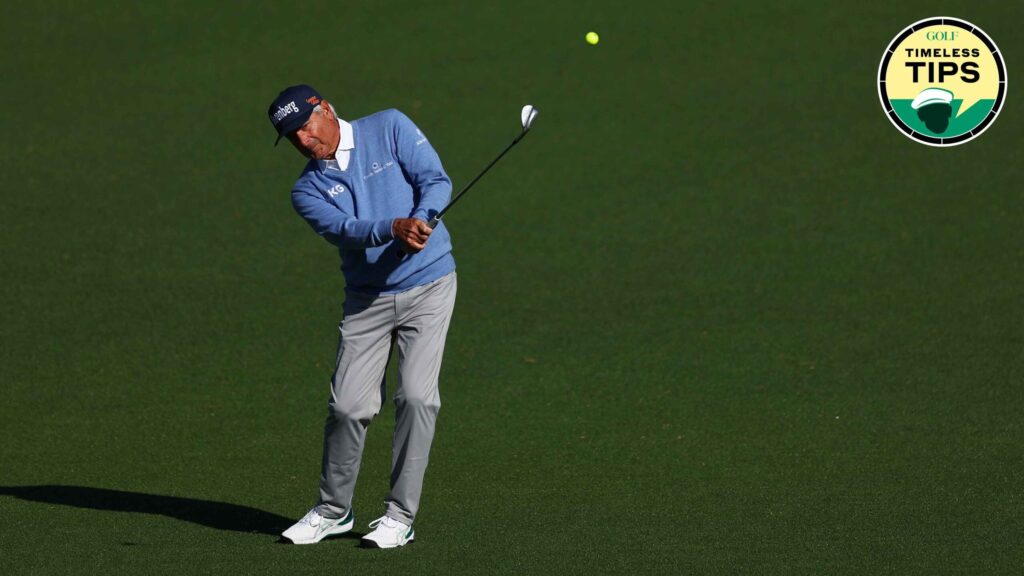Mastering the High, Lofted Pitch Shot: Insights from Fred Couples
Golf is a game that requires skill, practice, and a deep understanding of various techniques to achieve success, especially around the greens. In this comprehensive guide, we’ll explore the intricacies of executing the high, lofted pitch shot, as famously advocated by golf legend Fred Couples. By the end of this article, you’ll not only understand the importance of diverse shot types around the greens but also gain valuable techniques that will elevate your short game.
Understanding the High, Lofted Pitch Shot
In golf instruction, versatility is key. The high, lofted pitch shot is particularly useful in scenarios where a lower chip might face obstacles, such as slopes or mounds on the green. Fred Couples, known for his finesse around the greens, emphasizes the importance of this shot in his golfing philosophy. By learning to execute a high pitch, you can navigate challenging lies with greater ease and accuracy.
The Advantages of the High Pitch Shot
Why choose a lofted pitch over a traditional chip shot? Modern golf courses feature more severe green designs than they did decades ago. This means that if you aim to land your ball near the hole, you may encounter complicated breaks requiring careful calculations. By opting for a high pitch that lands further onto the green and allows for a softer roll, you simplify your shot. This approach minimizes the factors you need to consider, focusing your attention directly on the last leg of the shot.
Technical Breakdown of Execution
Fred Couples advises that the mechanics of the high, lofted pitch should closely resemble those used in full swings. While many traditional instructors promote a stiff, wrist-dominant stroke, Couples suggests a more natural approach. Taking inspiration from full swing mechanics can enhance your feel and consistency around the greens.
Key Mechanics to Master
Weight Distribution: Start with an even weight distribution across your feet, slightly favoring your right side. This stance helps you initiate a smooth backswing.
Ball Positioning: Place the ball just ahead of center in a narrow stance. Maintaining an open stance assists in targeting and improves your alignment.
Hand Position: Allow your hands to rest even with the ball rather than ahead of it. This creates a better chance for clean contact, promoting consistent control over distance and trajectory.
- Backswing and Downswing: As you take the backswing, let your right hand lead the motion lightly, hinging your wrist naturally. This U-shaped arc will translate into more fluidity during the downswing.
Following Through
The essence of a great pitch shot lies not just in the backswing but also in the follow-through. Unlike many traditional chipping strokes that end abruptly, this technique encourages a smooth release. Picture your stroke as if you’re ladling soup; maintain that flow throughout your finish to ensure a soft landing.
Overcoming Common Pitfalls
Many golfers fall victim to the common misconception that a tight, stiff wrist yields better accuracy. In reality, this often restricts the club’s motion, leading to poor control. Instead, remember to release the club freely, allowing it to move naturally through impact.
Another common mistake is underestimating the importance of visualization. Practice visualizing where you want the ball to land, taking into consideration the slopes and breaks of the green. This mental preparation makes a significant difference, allowing you to execute your shot with confidence.
Practice Makes Perfect
As with any skill, mastering the high, lofted pitch shot requires practice. Spend time working with various wedges—pitching wedge, sand wedge, and lob wedge—around the greens to understand their distinct carry and roll distances. The goal is to develop a feel that enables you to control distance more effectively. Eventually, you should aim to consolidate your selection of clubs, relying primarily on four key options to further streamline your strategy.
Adapting to Different Lies
One of the most noteworthy aspects of Couples’ approach is its adaptability to different lies. Whether you’re facing a tight lie next to the greens, a delicate situation in the sand, or a flighty patch of grass, understanding how to employ a high pitch provides you with flexibility and confidence. Experimenting with various lies can enhance your ability to tackle various situations during play.
The Importance of a Strong Mental Game
Golf is as much a mental game as it is a physical one. The high, lofted pitch shot challenges you not only technically but conceptually. Learning to trust your instincts and understanding which shot to play when can have a significant impact on your overall performance. Stay calm, composed, and deliberate in your strategy, especially when faced with delicate or challenging shot situations.
Conclusion: Elevate Your Game with the Right Techniques
Fred Couples’ approach to the high, lofted pitch shot serves as an excellent reminder of the importance of versatility and adaptability in golf. By embracing a range of techniques and focusing on natural mechanics, you can develop a stronger short game that will lead to lower scores and enhanced enjoyment on the course. Continue to practice, visualize, and refine your skills, and watch your short game thrive as you master the art of the pitch shot.
By incorporating these timeless tips into your routine, you’re setting yourself up for golfing success whether you’re a novice or an experienced player. Invest the time and effort, and you’ll reap the rewards in improved performance on the golf course.


